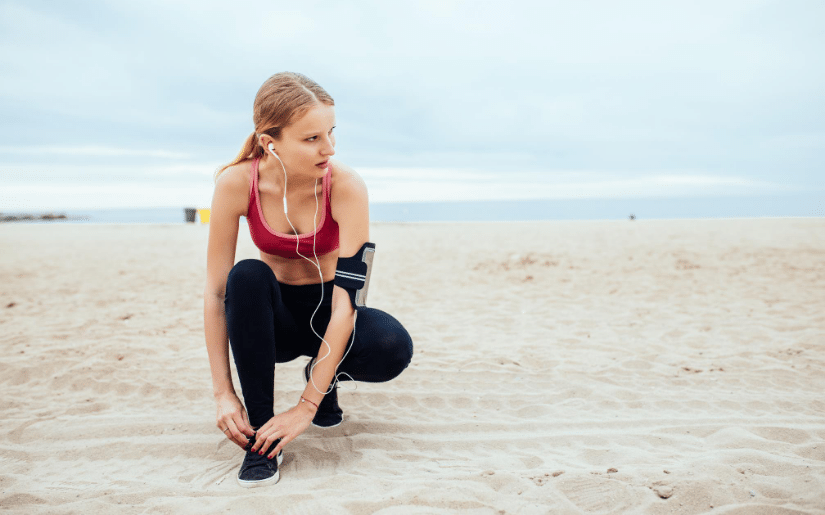There’s no more beautiful or peaceful setting for a run than the beach. You can adapt your workout to make it as relaxed or challenging as you like. And, you can jump in the water when you’re done to reward yourself for all of your hard work.
But those aren’t the only benefits! Running on the beach with shoes or barefoot has a lower impact on the body than running on a firm surface. It also strengthens the ankles, arches of the feet, and other muscles below the knee better than running on pavement.
Beach running also consumes more energy than running on a hard surface, so it’s a great choice if you’re trying to lose weight. And, it requires more force and a fuller range of motion in the ankles, hips, and arms, which means it can make you a stronger runner overall.
If you’re thinking about switching up your every day running routine by running on the beach- with shoes or barefoot- here’s what you need to know to get started.
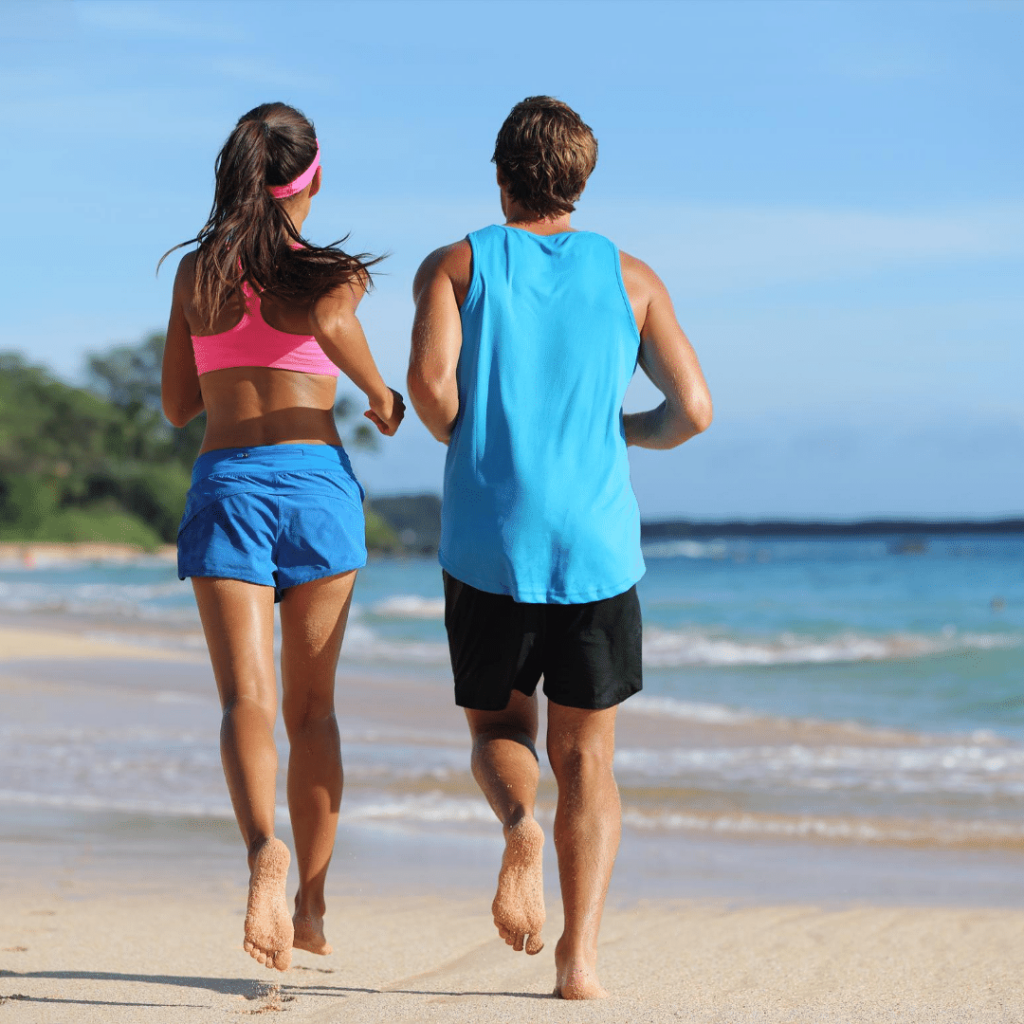
Running on the Beach: Shoes or Barefoot?
When you’re running on the beach, is it better to wear shoes or go barefoot? The truth is, there are pros and cons to each, and it all comes down to your fitness level, goals, and personal preference.
When you run barefoot on sand, it allows your feet to move through their entire range of motion, which is great for strengthening the ankles and feet. And, let’s face it, there’s nothing better than the feeling of sand between your toes!
However, you should be aware that running barefoot on the beach can lead to or worsen ankle sprains, Achilles injuries, plantar fasciitis, and similar injuries. This is because your muscles are being stretched further than they would be with the support of good running shoes on a firm surface.
If you want to get started with running barefoot on the beach, we suggest starting out with short runs of 15 to 20 minutes. Then, slowly add time in five-minute increments as you build up your strength.
For most people, running on the beach with running shoes is a safer option because running shoes provide support and stability, which means less risk of injury. Shoes also protect the feet from sharp objects like broken glass, shells, and other debris that may be laying in the sand.
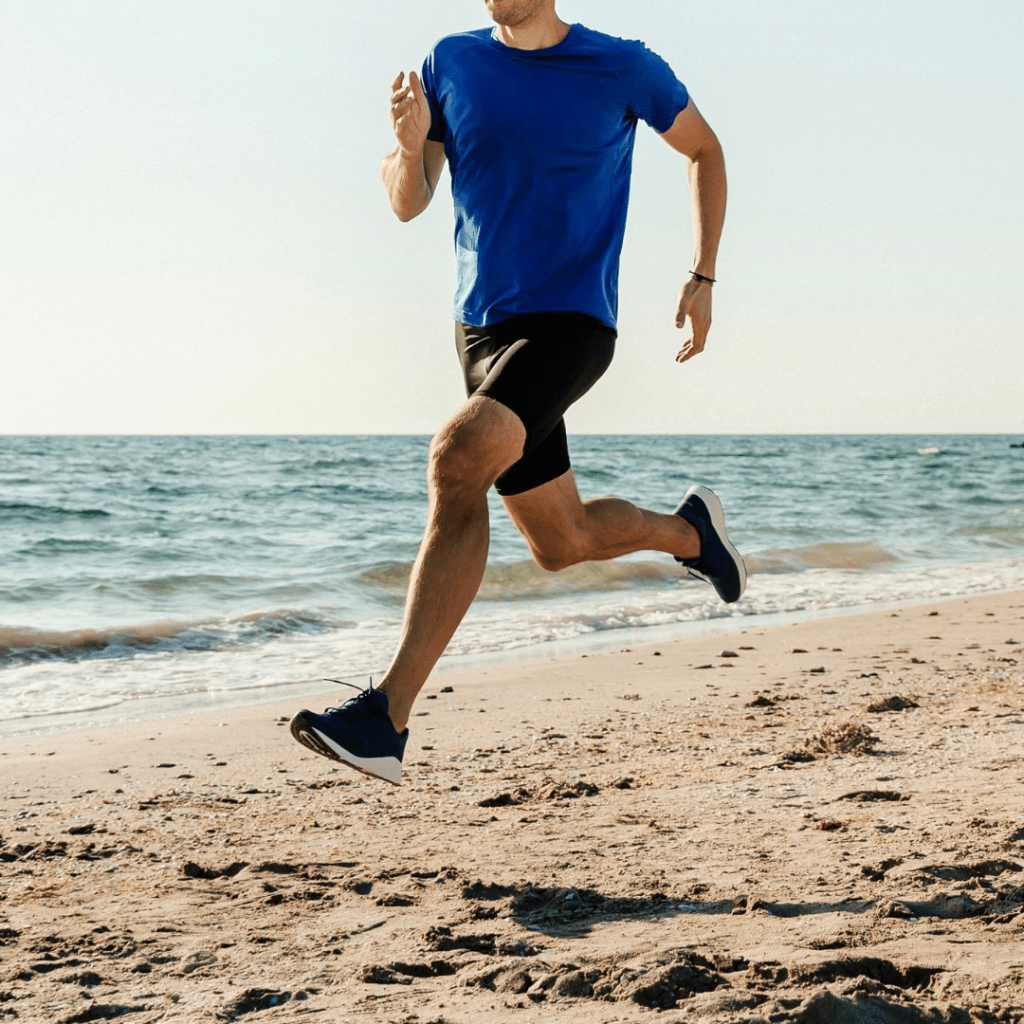
How to Choose the Best Running Shoes for Running on the Beach
Wearing your regular running shoes when you run on the beach is perfectly fine, but they might get wet or full of sand. Most beach runners find it handy to have a dedicated pair of running shoes just for beach runs.
Although there is no such thing as a beach running shoe, the best running shoes for beach running are light-weight trail or water shoes that have a good grip and decent arch support. It’s best if your beach running shoes have a closed or tight mesh upper to help keep sand out.
No matter which running shoe you choose for the beach, wear good socks or use something like Vaseline to prevent blisters. Blisters are a common problem for beach runners due to the friction of sand getting inside the shoe.
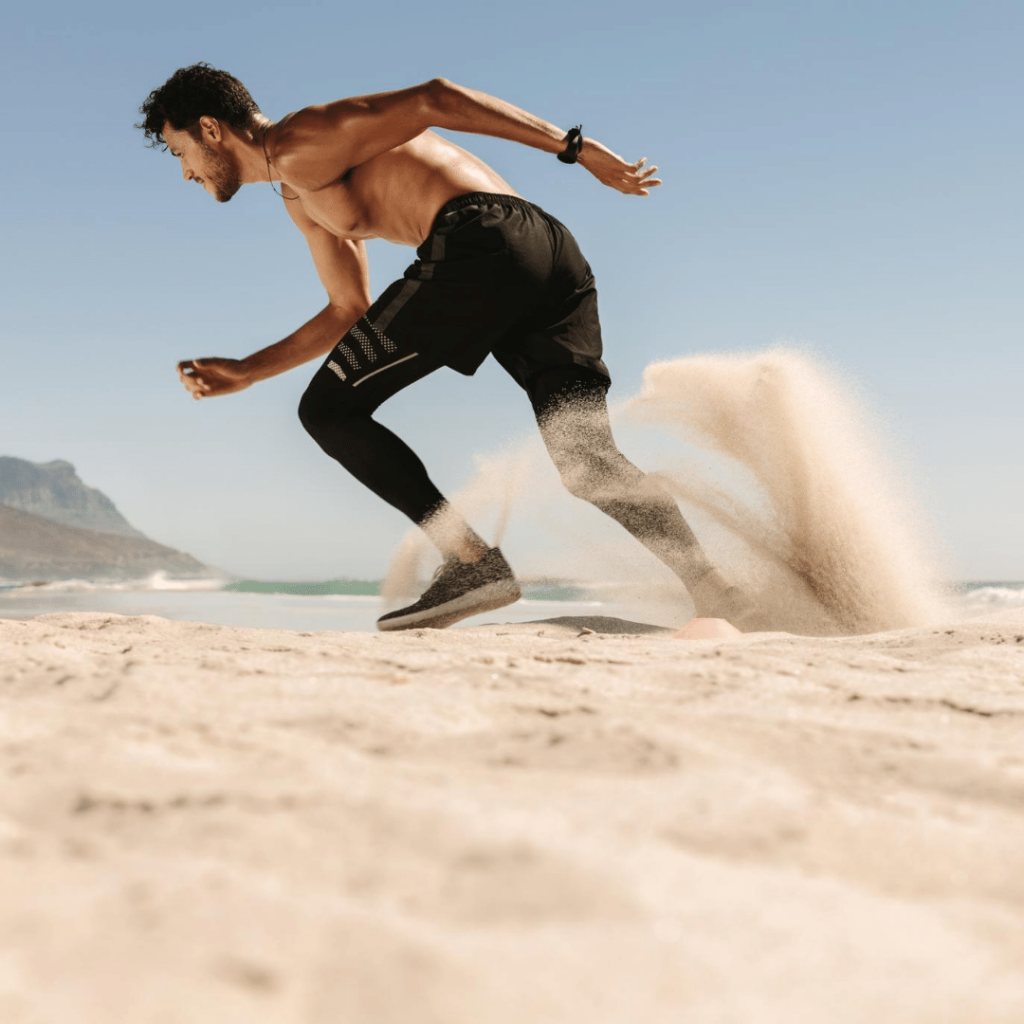
How to Run on Sand Without Getting Hurt
Whether you choose to run at the beach with shoes or barefoot, there are some things you should know to help prevent injuries.
First, check the tide reports before deciding on a time for your run. Keep in mind that running at low tide will provide you with a level, hard-packed surface that’s easier to run on. Don’t worry, it’s still soft enough to be low impact!
On the other hand, running at high tide will mean the sand is soft and dry. This will be the kindest on your joints, but it also requires more energy and power.
Slanted areas of the beach will provide additional challenges. Running on a slant could lead to a breakdown in form, causing you to put more pressure on your knee, ankle, and hip on one side, increasing your risk of injury.
If the beach is slanted, be sure to change directions halfway through your run to even out the impact on both sides. And, always be alert for signs of pain. If you notice anything off, shorten your run and be careful to stay on firmer, level sand for the rest of your run.
Warm-ups like lunges, squats, high-knees, and calf raises are essential any time you run, but they’re especially important when you’re running on the beach. You need to get those leg muscles warmed up! And, don’t forget to do your cool-down stretches, too.
The sun presents a major safety factor when you’re running on the beach. Be sure to wear sunscreen and avoid running on the beach between 10 AM and 4 PM, when the sun is at is most intense. Make sure you’re properly hydrated before and during your run, too.
Incorporating the right running supplements into your daily regimen is crucial for increasing energy and stamina, reducing injuries, and supporting faster recovery times.
Adding a of couple weightlifting sessions into your running routine is another great way to build strength and improve your running form. In general, most runners will perform best if they allow for one full day of recovery between high-intensity workouts.
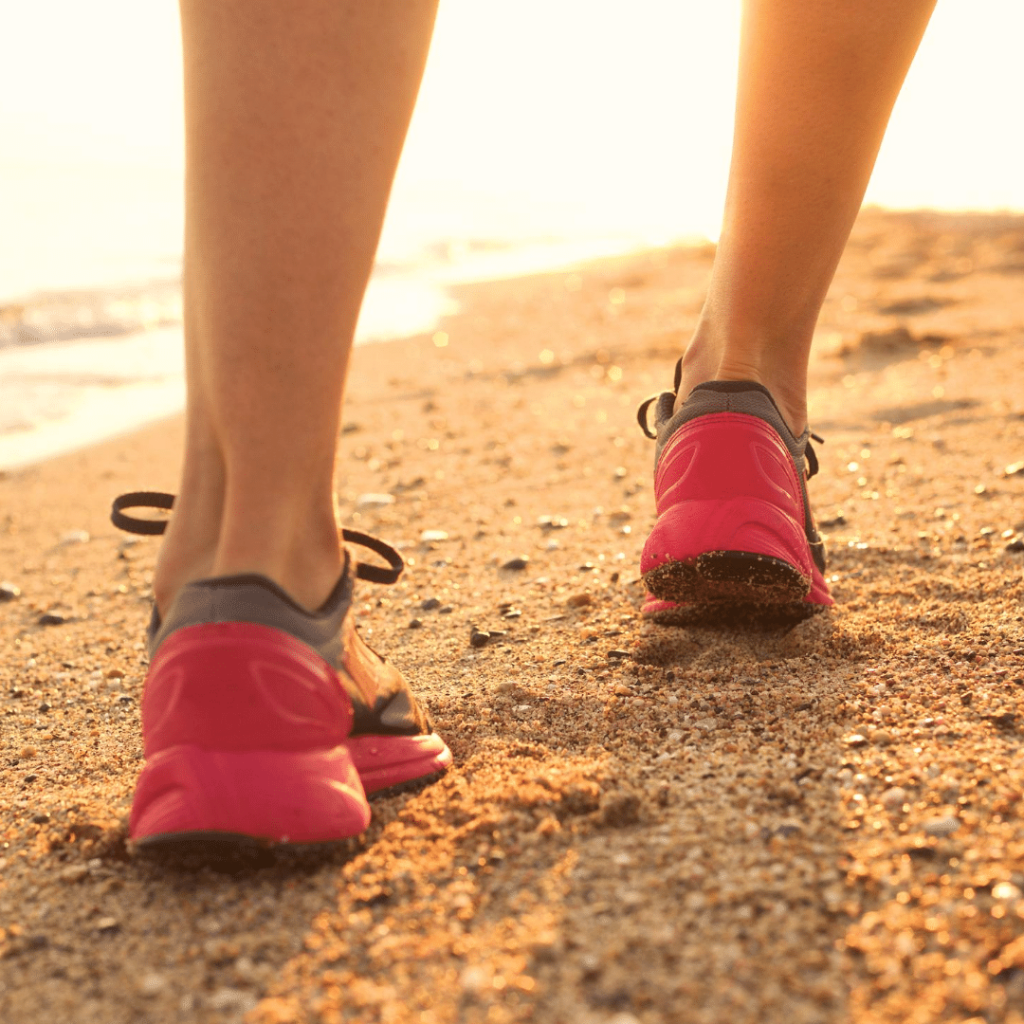
Tips for Beginning Beach Runners
If you’re new to beach running, plan on going at a slower pace than you’re used to. The change of terrain can make even the most experienced runner feel like they’ve strapped on a pair of ankle weights.
Instead of running for a certain distance, set a goal to run for a specific time instead. Don’t be surprised if running for two miles feels like running for 12 when you’re running on sand.
When you’re new to running on the beach, it’s best to start out wearing good running shoes and running on firm sand at low tide.
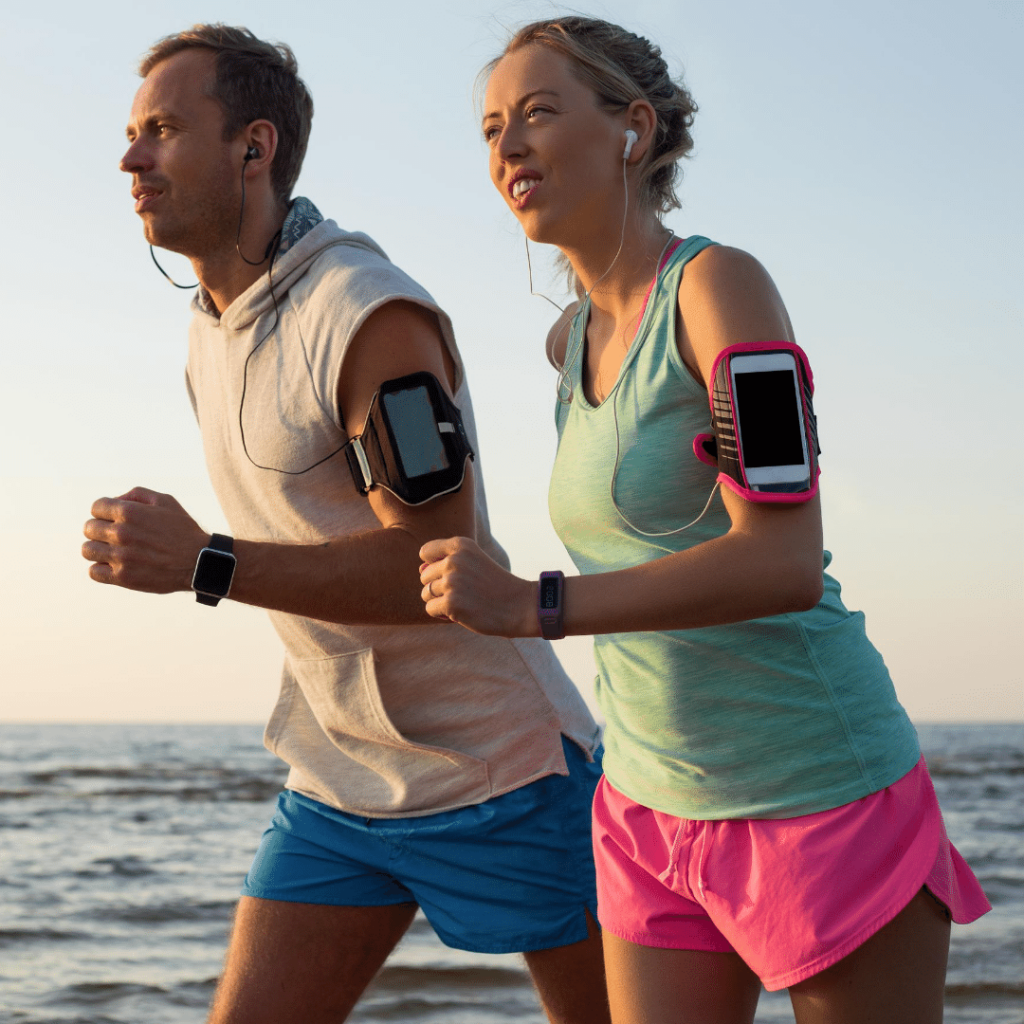
FAQs About Running on the Beach
Is it better to run on the beach with or without shoes?
Running on the beach with shoes and barefoot are both fine, as long as you take the precautions outlined above. However, if you’re new to running on the beach, always wear shoes for support until you build up strength in the muscles required for running on sand.
Is running on sand better for your joints?
Yes, running on sand is much better for your joints than running on hard surfaces. The softer surface is shock-absorbing, which means less wear and tear on your knees, hips, and ankles.
Why is running on the beach harder than running on a road, sidewalk, or track?
One study showed that running on sand (even firm sand) forces the body to work at least 10% harder than it does when running on hard surfaces. That’s because the uneven, soft surface, leads to differences in weight distribution to stay balanced and it requires more power overall.
The added resistance from running on sand also means your heart rate will rise faster and your muscles will work harder. You will also burn more calories, which is great news if you’re trying to lose weight.
Is running barefoot on the beach good or bad?
The answer to this question is different for everyone. Running barefoot on the beach makes your workout more challenging. And, it could help you stay motivated if you enjoy the feel of the sand under your feet and the beautiful scenery.
However, it does also come with a higher risk of injury. If you do decide to run barefoot on the beach, be sure to follow the safety guidelines outlined above.
Will running on the beach ruin my running shoes?
Your shoes will likely get wet and full of sand. Although they can be cleaned, most runners find it convenient to have a second pair of running shoes just for beach running. That way they don’t have to worry about getting all the sand out every time or waiting for them to dry completely before they can run again.
The Bottom Line
Whether you wear running shoes or go barefoot, running on the beach is a great way to change up your routine and build strength in muscles you don’t normally use. Just be sure to follow the safety guidelines outlined throughout this article to prevent injuries and get the most out of your workouts.

